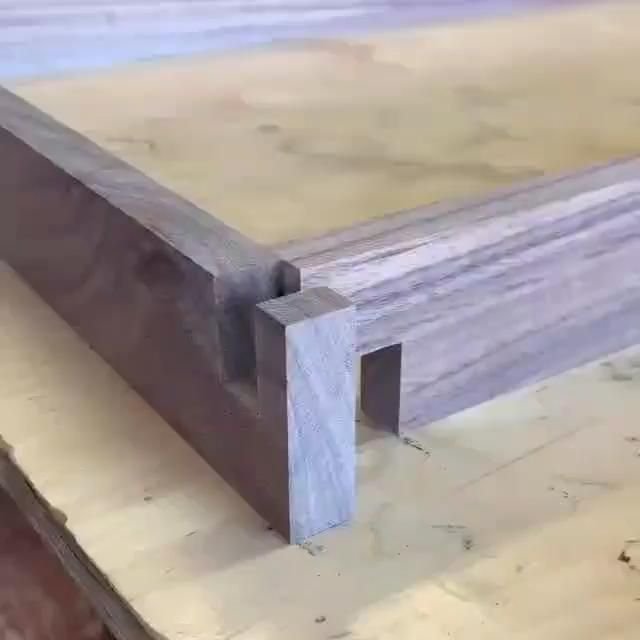Sanding is a crucial step in woodworking that can make or break the final outcome of a project. Knowing when to sand wood for woodworking is essential for achieving a smooth and professional finish. Whether you are working with hardwood, softwood, or reclaimed wood, understanding the importance of proper sanding techniques can greatly impact the overall quality of your work.
Before delving into the specifics of sanding, it is important to grasp why sanding is such a critical aspect of woodworking. The process of sanding not only smoothens the surface of the wood but also prepares it for further treatment such as staining or painting. It helps to remove any flaws, imperfections, or rough spots on the wood, resulting in a more polished and refined end product.
Different types of wood have unique characteristics and grain patterns that require specific sanding needs. Understanding these variations will allow you to tailor your sanding approach to each type of wood, ensuring optimal results. Additionally, preparing the wood for sanding by thoroughly cleaning and smoothing it beforehand is an essential preliminary step in achieving a flawless finish.
Different Types of Wood and Their Sanding Needs
When it comes to woodworking, understanding the specific needs of different types of wood is crucial for achieving a smooth and professional finish. Each type of wood has its own unique characteristics and grain patterns, which require different sanding techniques and tools.
For softwoods such as pine or cedar, it’s important to use a finer grit sandpaper to avoid causing damage to the softer wood fibers. Hardwoods like oak or maple, on the other hand, can withstand coarser grits for initial sanding to remove imperfections. Additionally, exotic woods like teak or mahogany may require special attention due to their density and natural oils.
In order to determine the specific sanding needs for each type of wood, it’s essential to research and understand the properties of the wood being used. This knowledge will guide woodworkers in choosing the appropriate sandpaper grits, tools, and techniques for achieving the best results.
| Wood Type | Sanding Needs |
|---|---|
| Softwood (e.g. pine) | Finer grit sandpaper to avoid damage |
| Hardwood (e.g. oak) | Can withstand coarser grits for initial sanding |
| Exotic Wood (e.g. teak) | May require special attention due to density and natural oils |
Preparing the Wood for Sanding
Wood sanding is a crucial step in the woodworking process that helps to achieve a smooth, even, and attractive finish on your project. However, before you begin sanding, it’s essential to properly prepare the wood to ensure the best results. This includes cleaning the wood surface to remove any dirt, dust, or debris that could interfere with the sanding process. Additionally, smoothing out any rough patches or imperfections in the wood will make the sanding process more effective.
When preparing the wood for sanding, start by thoroughly cleaning the surface with a damp cloth to remove any built-up dirt and residue. For stubborn areas, a mild detergent can be used to gently scrub away grime.
Once the wood is clean and dry, inspect the surface for any rough spots or blemishes that need to be smoothed out before sanding. This can be done using a scraper or sandpaper with a coarser grit to gently level out any imperfections.
In addition to cleaning and smoothing the wood surface, it’s important to take into consideration the type of wood being used and its specific sanding needs. Different types of wood have unique characteristics that may require different techniques or tools for proper preparation before starting the sanding process.
| Wood Sanding Preparation | Cleaning and Smoothing |
|---|---|
| Thoroughly clean wood surface with damp cloth | Remove built-up dirt and residue |
| Inspect for rough spots or blemishes | Smooth out imperfections with scraper or coarse-grit sandpaper |
| Consider type of wood being used | Unique characteristics may require different preparation techniques |
Tools and Equipment Needed for Sanding
When it comes to sanding wood for woodworking, having the right tools and equipment is essential in achieving a smooth and professional finish. There are a variety of options available for sanding, so it’s important to choose the right tools for the job based on the type of wood and the desired finish.
Sanding Tools
The most common tools used for sanding wood include sandpaper, sanding blocks, orbital sanders, belt sanders, and handheld oscillating tools. Sandpaper comes in different grits, ranging from coarse to fine, and the appropriate grit will depend on the type of wood and the level of smoothing required.
Dust Collection Systems
Wood dust can be a hazard to health and safety if not properly managed. Dust collection systems such as shop vacuums or dust extractors are important for maintaining a clean work environment when sanding wood. These systems help to reduce airborne particles and keep the workspace clear.
Protective Gear
Sanding wood can create a significant amount of dust and debris. As a result, it’s crucial to use protective gear such as safety goggles, masks or respirators, and ear protection when operating power sanding equipment. Safety should always be a top priority when working with wood.
By having the right tools, dust collection systems, and protective gear in place, you can ensure that your woodworking project will have a professional finish while also prioritizing health and safety concerns.
Techniques for Sanding Different Wood Grain Patterns
Wood grain patterns can greatly impact the sanding process in woodworking. Different patterns, such as straight, spiral, and interlocked grain, require different techniques to achieve a smooth and even sanded finish. Here are some techniques for sanding different wood grain patterns:
- Straight Grain: For wood with a straight grain pattern, sanding should be done parallel to the direction of the grain. This helps prevent scratches and ensures a smooth finish.
- Spiral Grain: When dealing with wood that has a spiral grain pattern, it’s important to sand at an angle to the direction of the spiral. This will help minimize tear-out and produce a more uniform surface.
- Interlocked Grain: Wood with an interlocked grain pattern may require sanding in multiple directions to effectively smooth out the surface. Start with sanding parallel to the grain, then switch to a diagonal or cross-grain sanding technique for best results.
Knowing how to approach different wood grain patterns when sanding is crucial for achieving professional-looking results in woodworking projects. By using the appropriate techniques for each type of pattern, woodworkers can ensure that their finished pieces look polished and well-crafted.
It’s important to keep in mind that regardless of the wood grain pattern, proper preparation and careful attention to detail are essential for successful sanding. Before beginning the sanding process, make sure that the wood is clean and free of any debris or imperfections that could affect the outcome. Additionally, choosing the right grit of sandpaper and using it progressively can help achieve a consistent and refined finish.
When to Start Sanding
Initial Preparation
Before even thinking about sanding, it’s important to make sure your wood is properly prepared. This includes planing and jointing the surface to ensure it is flat and smooth enough for sanding. Additionally, any excess glue or dirt should be removed from the surface before beginning the sanding process.
Before Assembly
In most cases, it’s best to start sanding before assembling the pieces of your project. Sanding individual pieces allows for easier access to all surfaces and edges, resulting in a more uniform finish. It also allows for greater control over the pressure applied during sanding, which can help prevent uneven surfaces from forming.
Final Sanding
Once your woodworking project is assembled, a final round of sanding may be necessary. This ensures that any joints or connections are seamless and smooth, and that any scratches or marks from assembly are removed. Additionally, this final step provides an opportunity to address any spots that may have been missed during earlier stages of sanding.
Tips for Achieving a Smooth and Even Sanded Finish
Woodworking involves many different steps, and one of the most crucial ones is sanding. Achieving a smooth and even sanded finish can greatly enhance the overall look and feel of your woodworking project. Here are some helpful tips for achieving a professional-level finish when sanding wood for your woodworking projects:
- Use the right grit: The key to achieving a smooth finish when sanding wood is using the right grit sandpaper. Start with a coarser grit to remove any rough spots or imperfections, and then gradually work your way up to a finer grit to create a smoother surface.
- Work with the grain: Sanding against the grain can result in unsightly scratches on the wood. Always make sure to sand in the direction of the wood grain to ensure a uniform appearance.
- Inspect your work: As you sand, periodically inspect the wood surface for any remaining imperfections or blemishes. This will allow you to spot problem areas early on and address them before moving on to finer grits.
In addition to these tips, it’s important to remember that achieving a smooth and even sanded finish takes time and patience. Rushing through the sanding process can lead to subpar results, so take your time and pay attention to detail as you work through each step of the sanding process. By following these tips and taking your time, you can achieve a beautifully sanded finish that will enhance the overall quality of your woodworking projects.
Common Mistakes to Avoid When Sanding Wood
Sanding wood is a crucial step in the woodworking process as it helps achieve a smooth and polished finish. However, there are common mistakes that woodworkers should avoid to ensure that the sanding process is effective and efficient. One common mistake is skipping grits when sanding.
It may be tempting to start with a coarse grit to remove imperfections quickly, but this can lead to scratches and uneven surfaces. It’s important to gradually progress through the grits to ensure a consistent and smooth finish.
Another mistake to avoid is applying too much pressure when sanding. Pressing too hard on the wood can result in an uneven surface and can even damage the wood fibers. It’s important to let the sandpaper do the work and maintain a consistent pressure throughout the sanding process.
Additionally, using dull sandpaper is also a common mistake that should be avoided. Dull sandpaper will not effectively smooth out imperfections and may leave behind scratches on the wood. It’s essential to regularly change the sandpaper and use fresh, sharp sheets for optimal results.
Furthermore, neglecting to clean the wood between grits is another common mistake that can compromise the quality of the sanded finish. Residual dust particles left on the wood can get trapped in the next layer of finish, resulting in an imperfect surface. Properly cleaning the wood between grits ensures a clean and smooth finish. By avoiding these common mistakes, woodworkers can achieve a professional-looking sanded finish with precision and patience.
In addition, using inadequate lighting during the sanding process can lead to missing imperfections in the wood. Proper lighting is essential for spotting any remaining scratches or uneven areas before moving on to finishing. Lastly, choosing an inappropriate grain direction when sanding can result in tearout or rough spots on the wood surface. It’s crucial to identify and follow the natural grain patterns of the wood for a smooth and even sanded finish that showcases its natural beauty.
Conclusion
In conclusion, understanding the importance of sanding in woodworking is crucial for achieving a smooth and professional finish. Different types of wood have varying sanding needs, and it’s important to prepare the wood properly by cleaning and smoothing it before beginning the sanding process. Additionally, having the right tools and equipment for sanding is essential in order to achieve the best results.
Timing is also an important factor when it comes to knowing when to sand wood for woodworking. Knowing when to start sanding in the woodworking process can make a significant difference in the final outcome. Whether it’s before or after assembly, having a good understanding of when to begin sanding can help you achieve the desired result.
Furthermore, achieving a smooth and even sanded finish requires patience and precision. It’s important to use proper techniques for sanding different wood grain patterns and to avoid common mistakes that can compromise the quality of the finish. By taking these factors into consideration, woodworkers can ensure that their finished products have a professional look and feel. Overall, patience and precision are key in achieving excellent results when sanding wood for woodworking projects.
Frequently Asked Questions
What Is the Golden Rule of Sanding?
The golden rule of sanding is to start with a coarser grit sandpaper and gradually work your way to finer grits. This helps to remove any imperfections and smoothen the surface effectively without causing any damage to the wood.
Should You Sand Wood Before Assembling?
It is generally advisable to sand wood before assembling the final product. Sanding individual pieces of wood before assembling allows for easier access to all surfaces and ensures a more uniform finish. This also prevents any potential damage to other components of the project during the sanding process.
Should You Dry Wood Before Sanding?
Yes, it is important to dry wood before sanding it. Sanding damp or wet wood can cause issues such as clogging of the sandpaper and raised wood grain, resulting in an uneven finish. Allowing the wood to dry thoroughly before sanding helps to achieve a smoother and more consistent result.

Hi everyone! I’m a woodworker and blogger, and this is my woodworking blog. In my blog, I share tips and tricks for woodworkers of all skill levels, as well as project ideas that you can try yourself.





